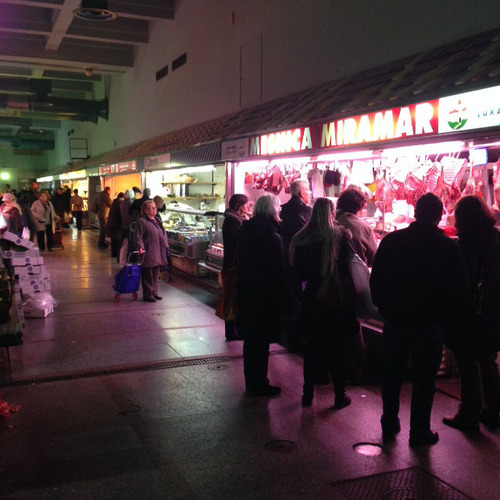Zagreb has an amazing daily market with produce, cheese, meat, pasta, baked goods, pickled foods, and even specialty items like tofu and seitan.


The market is the place where I’ve had the most challenges with language in Zagreb, which is overall an extremely English-language friendly city.
The language barrier, when I do encounter it, is entirely my fault. I know how to say approximately ten phrases in Croatian – eleven if you acknowledge that the words hot and wine might be used separately. My instinctive sense of both the currency (kunas) and weights (kilograms) are also both weak at best.
Based on my limitations, here is how my interactions at the market typically go:
- Exchange greetings in Croatian. (Good day is one of my eleven phrases.)
- Order by gesturing at the food I’d like (while smiling sheepishly now that I’ve revealed that I don’t speak Croatian.)
- Nod and smile when there is an appropriate amount of food on the scale.
- When it seems I’m being asked for money, hand over a coin or bill based on what seems correct. Almost always, this first guess is wildly off.
- Give more money. (Or, alternatively, wait for the vendor to find change from another vendor, because I’ve offered a bill of enormously too much value.)
- Watch for either a nod or some change to signal that I can stop giving money.
Or sometimes, I’ll know how much to pay because I’ll gesture at a sign with a price – for example one that says 2 kilograms of apples for 10 kunas. 10 kunas is only about $1.60, so from this particular exchange, I expected perhaps four apples. Instead, I found that 2 kilograms of apples is a pretty full bag. (My arms curse the teaching of the imperial system in US schools.)
Tired arms aside, I love the Zagreb market in all its crowded, confusing splendor. Throughout Europe, but especially here, markets feel like practical places where one can acquire pretty much everything.

